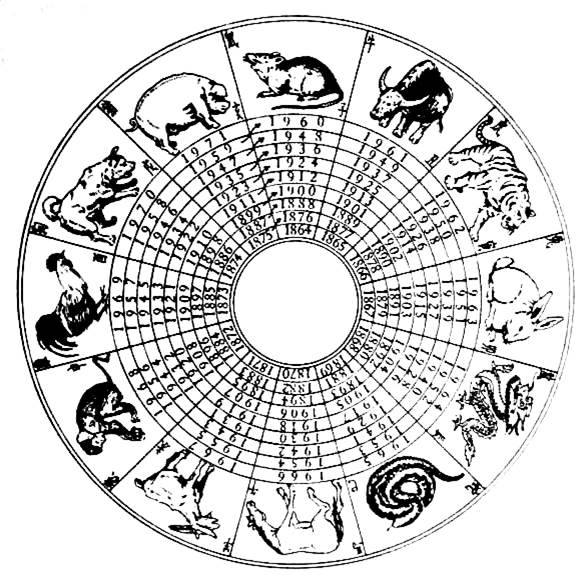
The Rat (鼠) is the first of the 12-year cycle of animals in the Chinese zodiac. The Year of the Rat is associated with the Earthly Branch (地支) symbol zhī (子). The first day, the Lunar New Year Day, of Year Gēng zi (庚子年) falls on Saturday 25 January 2020.
天干 (the Ten Heavenly Stems) :
甲乙丙丁戊己庚辛壬癸
地支 (the Twelve Earthly Branches) :
子丑寅卯辰巳午未申酉戌亥
十二生肖:鼠牛虎免龍蛇馬羊猴雞狗豬
The Rat is the first of all zodiac animals. According to one myth, the Jade Emperor said the order would be decided by the order in which they arrived to his party. The Rat tricked the Ox into giving him a ride. Then, just as they arrived at the finish line, Rat jumped down and landed ahead of Ox, becoming first.
Recent years of the Rat are: 1924, 1936, 1948, 1960, 1972, 1984, 1996, 2008, 2020.
Chinese Zodiac years are based on the Chinese lunar calendar. Interested people born in January or February can check the date of the Chinese New Year to confirm their birth sign, for example at the following site:
https://www.chinahighlights.com/travelguide/chinese-zodiac/rat.htm
In Chinese culture, rats were seen as a sign of wealth and surplus. They can eat anything and they are highly adaptive to all environment.
The squirrel (松鼠 sōng shǔ) uses the same character in Chinese, confirming the Western name for a squirrel ‘tree rat’ and has the same symbolism. Rats and squirrels are often shown with trailing plants such as vines to give the wish for generations of children.
Characteristic of people born in the Year of the Rat
According to Chinese folklore, most people born in the Chinese zodiac sign of the Rat are clever, ambitious, having broad interests and strong ability in adapting to the environment. They are also able to react quickly to any changes. They are creative and great at taking advantage of opportunities. They are content with living a quiet and peaceful life.
This is just a folklore with no scientific evidence. Please do not take this seriously. I have taught in high schools for many years. Students in the same class are of similar age and many students are likely to fall under the same Chinese zodiac. However, their characters can be very different.
Ceramic of the Rats and Squirrels








Qi Baishi (齊白石) (1864-1957) painted rats as cute and lovely animals. This is similar to the Micky Mouse, the mascot of the Walt Disney Company created in 1928.
.





Acknowledgements:
I would like to thank Professor P Lam for his kind guidance and support throughout the years.
Bibliography
https://chinesenewyear.net/zodiac/rat/
https://www.chinasage.info/symbols/animals.htm
中国剪纸 Paper Cut in China 十二生肖 The twelve symbol animals 漢坤東方出品
https://en.wikipedia.org/wiki/Chinese_zodiac
https://www.chinahighlights.com/travelguide/chinese-zodiac/pig.htm
Bjaaland Welch, Patricia (2008) Chinese Art- A guide to Motifs and Visual Imagery Tuttle Publishing ISBN: 978-08048-3864-1

